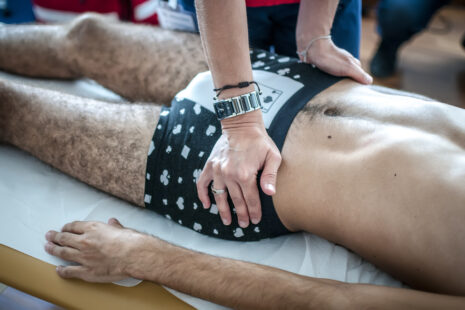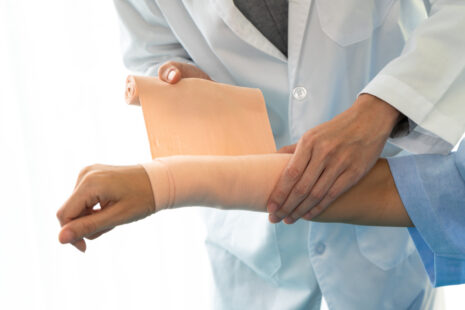While self-assessment techniques can provide some indication of a potential ACL (anterior cruciate ligament) injury, it’s important to note that a definitive diagnosis can only be made by a qualified healthcare professional, such as a physician or orthopedic specialist, through a physical examination and diagnostic tests (such as MRI or X-ray). However, if you suspect you may have torn your ACL.
Here are some signs and self-assessment methods that may suggest a possible ACL injury…
- Significant Pain and Swelling – A torn ACL can cause immediate pain and swelling in the knee joint, particularly if the injury was the result of a traumatic event, such as a sudden twisting motion or a direct impact to the knee.
- Feeling of Instability or “Giving Way” – Many individuals with a torn ACL report a sensation of instability or “giving way” in the knee, especially during activities that involve pivoting, cutting, or changing directions. The knee may feel as though it cannot support the body weight or maintain stability.
- Popping Sensation – Some people experience a popping sound or sensation at the time of the injury, often accompanied by immediate pain and swelling. However, not everyone with a torn ACL will necessarily hear or feel a pop.
- Limited Range of Motion – A torn ACL can lead to difficulty fully bending or straightening the knee, particularly due to swelling and pain. You may notice stiffness or a decreased range of motion compared to the uninjured knee.
- Positive Lachman or Anterior Drawer Test – While these tests are typically performed by healthcare professionals, you can attempt to assess for ACL laxity by performing the Lachman test or anterior drawer test on yourself:
- Lachman Test – Sit or lie down with your knee bent at approximately 20-30 degrees. Grasp the thigh above the knee with one hand and the calf below the knee with the other hand. Gently pull the tibia (shin bone) forward while stabilizing the femur (thigh bone). Excessive forward movement or a soft, mushy endpoint may suggest ACL laxity.
- Anterior Drawer Test – Sit or lie down with your knee bent at approximately 90 degrees. Place your foot flat on the ground or surface. Grasp the back of the lower leg (just above the calf) with both hands. Attempt to pull the tibia forward while stabilizing the femur. Excessive forward movement compared to the uninjured knee may suggest ACL laxity.
It’s important to remember that self-assessment techniques are not a substitute for professional medical evaluation and diagnosis. If you suspect you may have torn your ACL or sustained a knee injury, it’s advisable to seek prompt medical attention from a healthcare provider for an accurate diagnosis and appropriate treatment plan. Delaying treatment or attempting to self-diagnose may result in further complications or delays in recovery.



